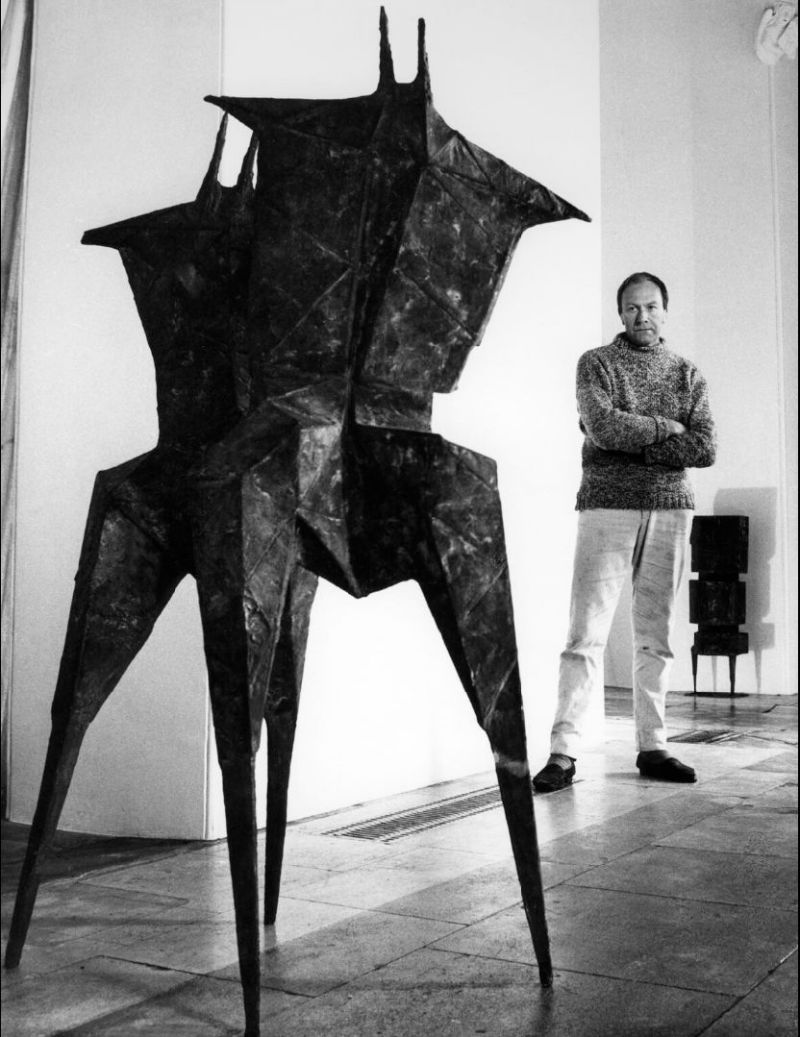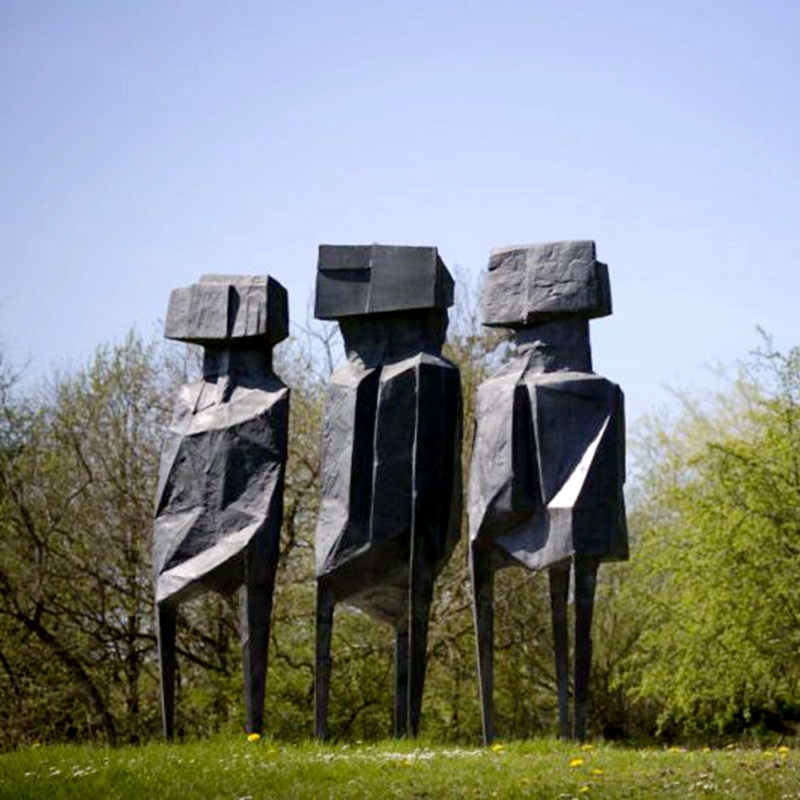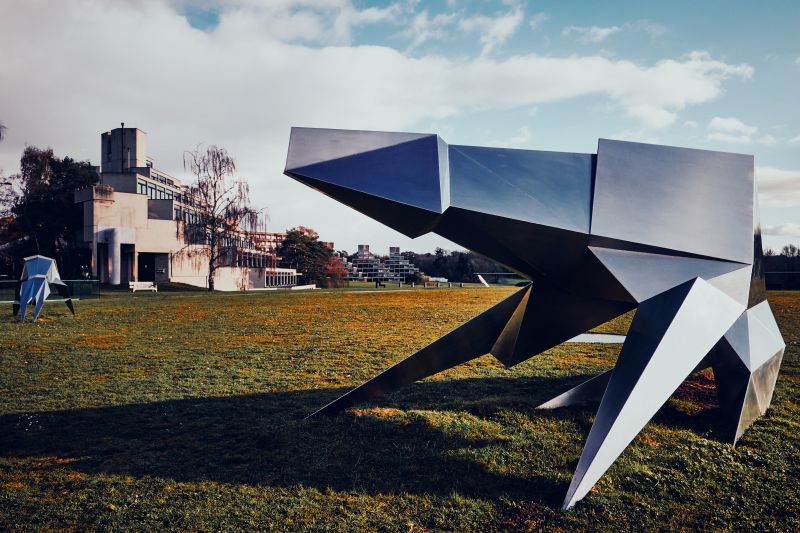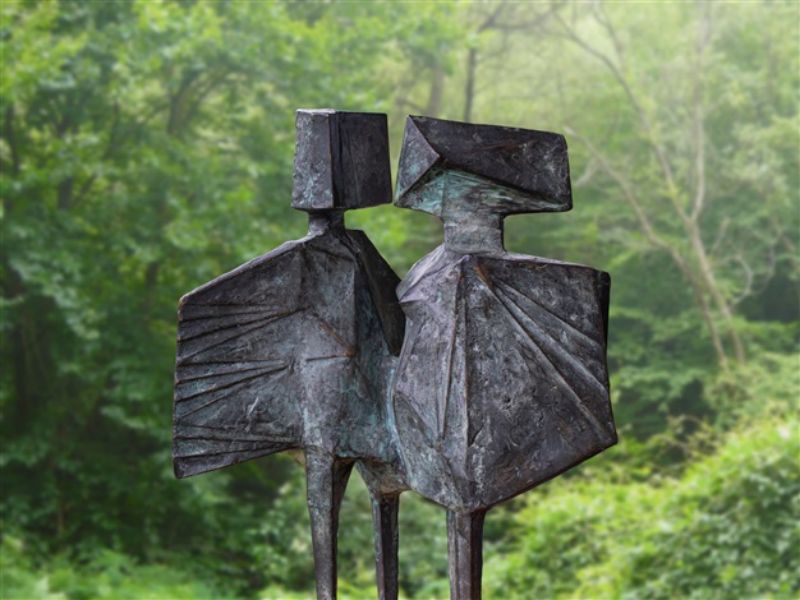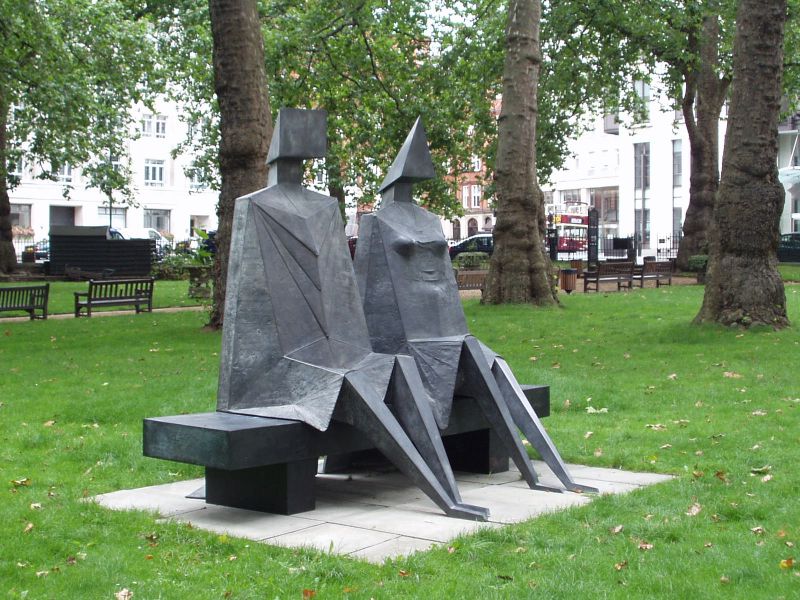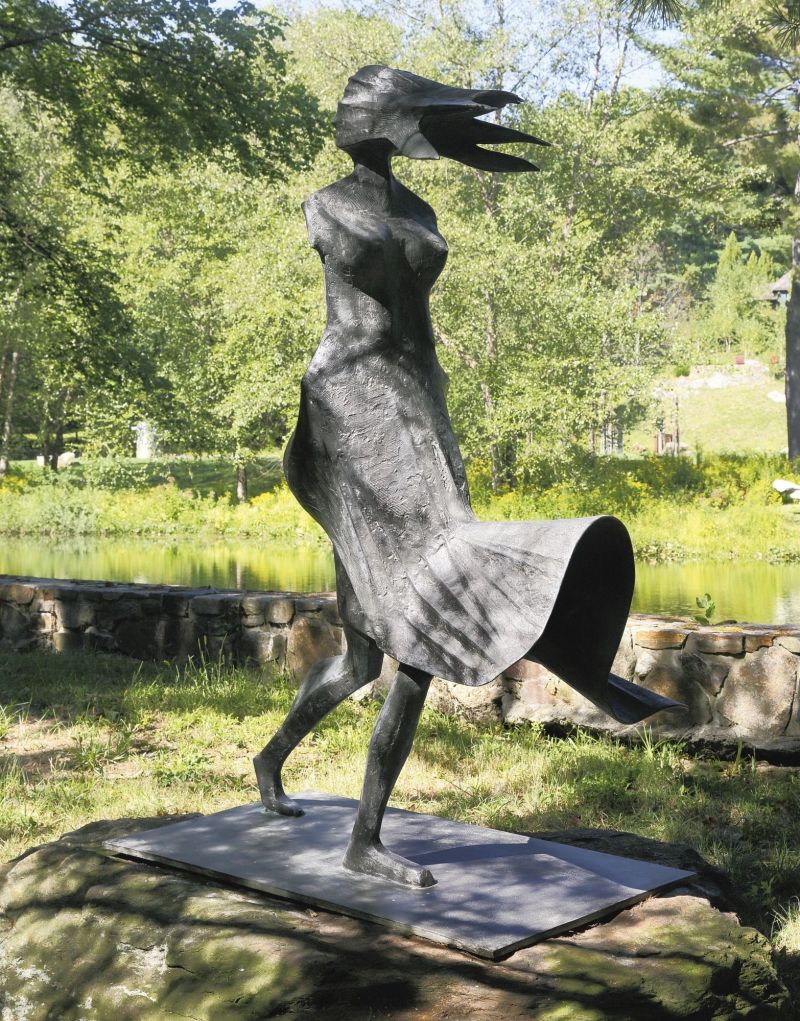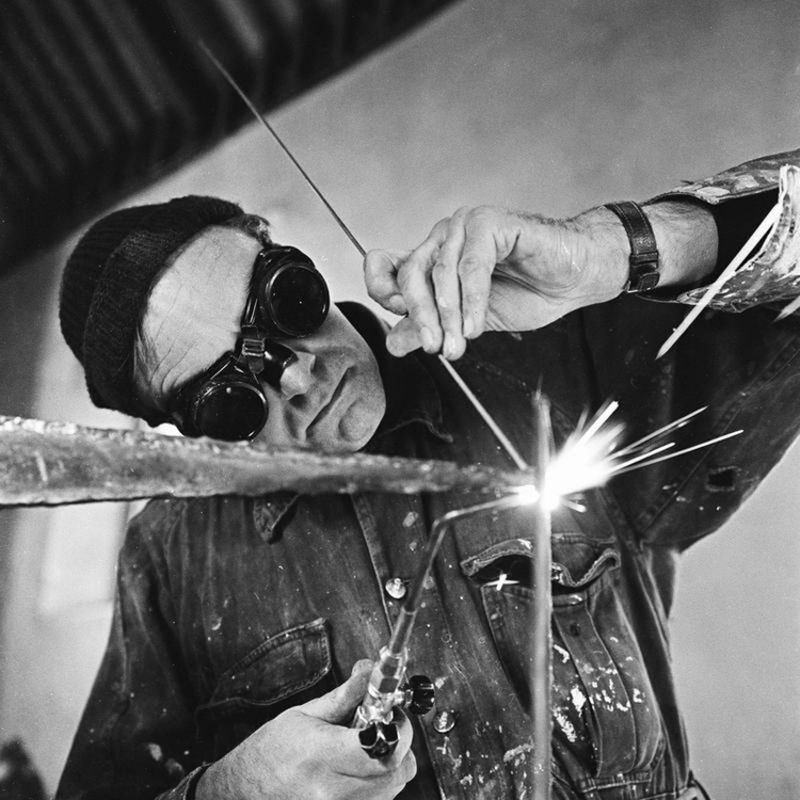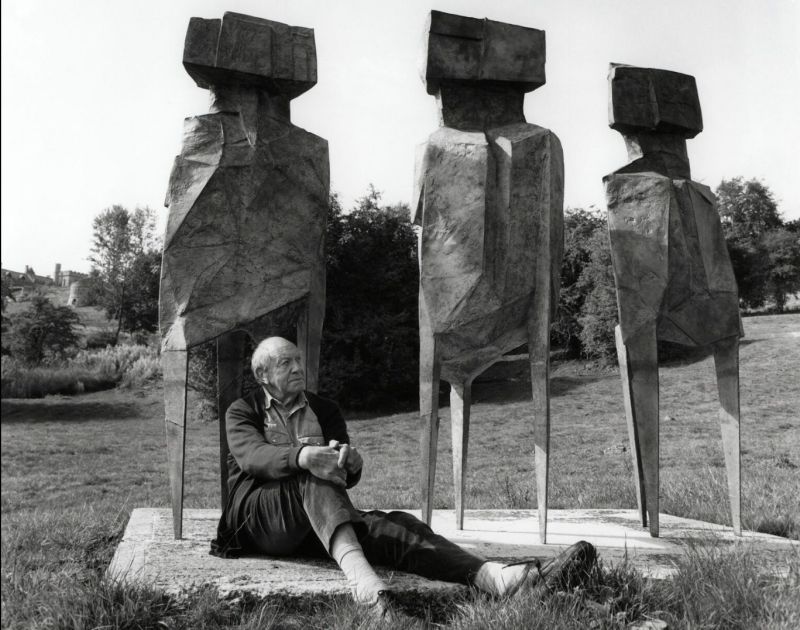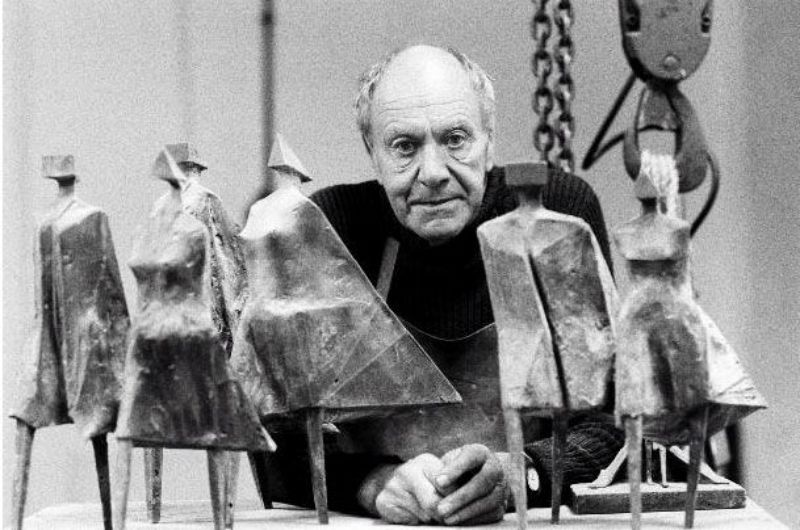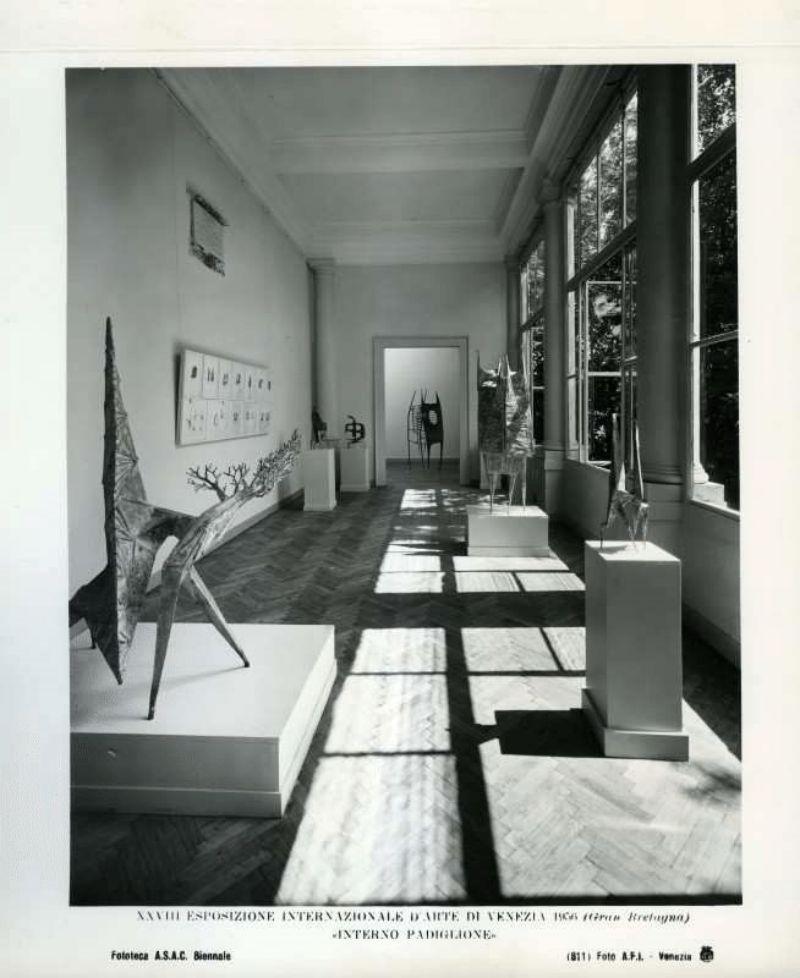Lynn Chadwick, a pivotal figure in 20th-century sculpture, revolutionized the art form with his dynamic, angular figures and abstract forms. Emerging during the post-war era, Chadwick’s unique approach to sculpture diverged significantly from traditional aesthetics, influencing a new generation of sculptors and reshaping modern sculpture. This blog delves into the profound impact Chadwick has had on the sculptural landscape, exploring the nuances of his legacy.
Lynn’s Most Famous Sculpture:
- The Watchers (1960)
“The Watchers” is one of Chadwick’s most recognized pieces, embodying his fascination with human forms and their interactions with space. This sculpture features three figures, each with an angular and geometric design, standing in a contemplative posture. The figures’ abstract faces and sharp lines create a sense of mystery and intrigue, inviting viewers to ponder their silent vigil.
- Beast (1957)
“Beast” showcases Chadwick’s ability to blend the organic with the abstract. This piece is a powerful representation of an animal, captured in mid-motion. Its angular and metallic structure gives it a futuristic yet primal feel, emphasizing strength and dynamism. “Beast” reflects Chadwick’s mastery of conveying energy and movement through static forms.
- Conjunction (1962)
“Conjunction” is a testament to Chadwick’s innovative approach to sculpture. This piece consists of two figures, seemingly engaged in a silent conversation. The figures are crafted with Chadwick’s signature angularity, yet they possess a fluidity that suggests a dynamic relationship. The sculpture explores themes of connection and communication, central to much of Chadwick’s work.
- Sitting Couple (1976)
“Sitting Couple” captures a moment of intimacy between two figures. The simplicity of their form, combined with the complexity of their interaction, creates a striking visual narrative. The piece is characterized by its sharp edges and defined planes, yet it exudes a sense of warmth and companionship. This sculpture exemplifies Chadwick’s ability to portray human emotion through abstract forms.
- Maquette for High Wind (1964)
“Maquette for High Wind” is an exploration of balance and tension. The sculpture depicts a figure bracing against an unseen force, with outstretched arms and a forward-leaning posture. The sense of movement and resistance is palpable, showcasing Chadwick’s skill in conveying dynamic motion. This piece highlights his interest in the human form’s response to external forces.
Innovative Techniques and Materials:
Lynn Chadwick’s innovative use of industrial materials like iron and bronze marked a departure from classical sculptural mediums. His technique of welding allowed for a more expressive manipulation of metal, enabling the creation of his signature “beast” sculptures. These materials not only reflected the post-war industrial mood but also helped redefine the possibilities of modern sculpture, emphasizing form over detail.
The Expression of Chadwick’s Sculpture:
Chadwick’s sculptures are renowned for their abstract and stylized forms, which often evoke human figures or animal shapes caught in movement. Unlike the smooth contours and idealized forms typical of earlier sculptures, Chadwick’s works are angular, jagged, and teeming with kinetic energy. This approach not only challenged viewers’ perceptions but also influenced contemporary sculpture by prioritizing emotion and abstract expression over realism.
Themes of Existentialism and the Human Condition:
The themes explored in Chadwick’s sculptures often reflect the existential anxieties of the Cold War era. His figures, sometimes menacing and twisted, can be seen as metaphors for the human experience in the modern world—reflecting themes of alienation, struggle, and resilience. This resonated with the existentialist philosophy prevalent at the time and opened up sculpture to new thematic explorations, moving beyond the decorative to engage deeply with societal and personal issues.
Lynn Chadwick’s Legacy and Influence:
Lynn Chadwick’s impact on modern sculpture extends beyond his works. He inspired a generation of sculptors to explore new materials and forms. His influence is evident in the works of contemporary sculptors who continue to push the boundaries of materials and themes, often echoing Chadwick’s dynamic forms and existential themes.
Lynn Chadwick’s contribution to modern sculpture is monumental. By breaking away from traditional forms and materials, he not only mirrored the tumultuous spirit of his times but also laid the groundwork for future innovations in the sculptural field. As we reflect on his works, we see not just sculptures, but markers of a pivotal shift in the artistic expression of the 20th century. Chadwick’s legacy continues to inspire and challenge artists, ensuring his place as a cornerstone of modern sculpture.

